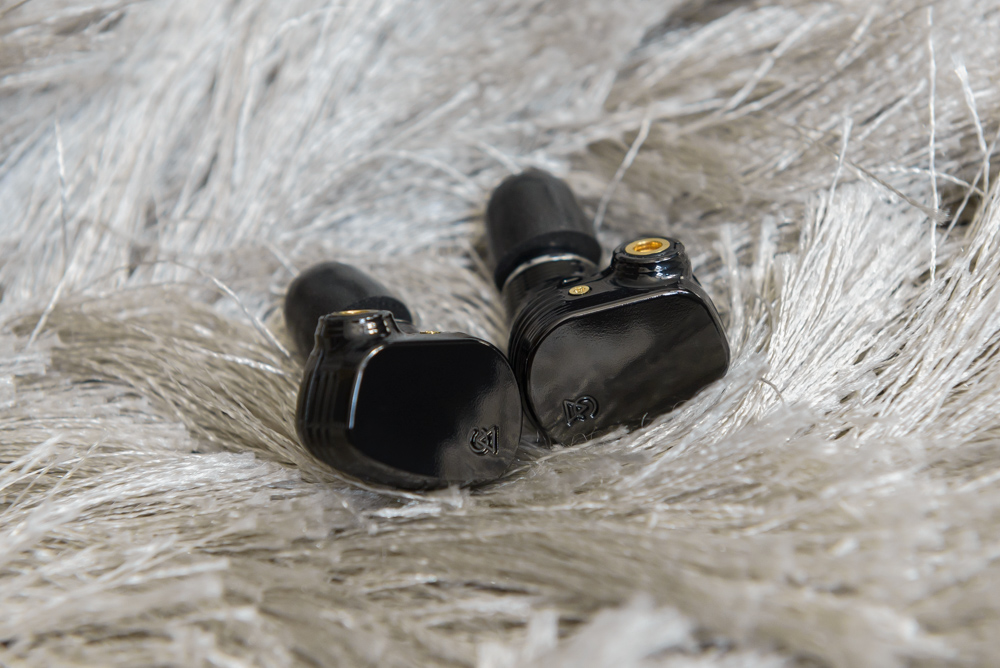Refreshed for 2020 the classic Campfire Audio Solaris have been reshaped to be 20% smaller along with a new Solid-Body internal acoustic chamber. Don’t worry though, that famously energetic sound is here to stay.

[jnews_review_shortcode review_show_pros_cons=”true” review_show_breakdown=”true” review_show_price=”true”]
Aesthetics and Build Quality
The new 2020 Solaris now sport a more understated colour scheme, but don’t worry they are finished in a lovely glossy black that is incredibly reflective. They will still catch your eye, but now don’t stand out quite so much which in my opinion is a bonus. They come with the newer smoky jacket super litz cable which is more ergonomic over the previous design. Personally I like the new colours, but I feel some will still prefer the previous gold colour scheme.
Build quality is like every other Campfire Audio model, superb. They know how to pull off some impressive designs, with incredible CNC skills and an impeccable finish. You cannot faulty the all metal build quality, and the cable is well relieved, all this leads to an IEM that should see you through for a long time.
Comfort
With the old Solaris, the most common comment and complaint was about their size and fit. The new 2020 edition slims down their shell size by 20% whilst keeping the same driver configuration. Now I personally suffer from small ears and narrow canals, and the original never fit me too well. The new 2020 edition fit better, they don’t quite fit flush and that will be reserved for those with bigger ears; however they do fit securely and comfortably so this is a big bonus.
Sound
Bass: That hard hitting, all powerful Solaris bass is here to stay, for all but the most hardcore bassheads there will be more than enough low end grunt. They are however still very well controlled, there is always going to be a sense of warmth and body to the sound thanks to the generous low end, however it manages to not interfere with the rest of the sound too much. Sub-bass is easily audible, the mid-bass hits with authority when asked to, however they are articulate and handle most genres with ease. The Solaris 2020 are tuned for fun, not for reference listening like the Andromeda, and they sure do deliver a very engaging and enjoyable sound.
Midrange: As previously stated the low end might be full bodied, but it does stay well controlled with minimal impact on the rest of the sound. The transition into the midrange is very well handled, there is a little bleed but the midrange still manages to cut through with great clarity and separation. The midrange might not be up front and centre stage, however it is well placed, slightly behind the lows, and has good tonality. It is impressive how layered and detailed the midrange manages to be, and yet at the same time it is always smooth, the transition into the treble is very well handled with no harsh sibilance. The midrange comes across as natural and real, and the layering really helps place instruments and vocal tracks within the soundstage.
Treble: These are not a bright earphone, they are also not incredibly v-shaped which tends to be a trend with a more bass oriented tuning. The top end is smooth, organic and refined, there is enough presence to keep things from sounding dull but they never overstep the line to becoming fatiguing. Cymbals are just where they need to be and come crashing in around the midrange with great precision and tonality and they extend with ease. They always maintain expert control without any peaks, there is a great sense of air up top and overall I really enjoy how real they sound.
Whilst reviewing these, I had Override by Slipknot come on, and this track really highlights what the Solaris 2020 can do. A heavy wall of drums and guitars, all perfectly layered but with such a powerful presentation. Corey’s vocals are perfectly isolated and hauntingly realistic, they handle every bit of the mix with ease yet it all comes together in a powerful and coherent sound.
The soundstaging and imaging of the Solaris 2020 are a strong point, with great accuracy when it comes to width, height and placement, yet they remain coherent throughout.
Conclusion
The Solaris 2020 are more comfortable and ergonomic, they are also a little more refined in their sound delivery with a slightly wider soundstage and more focused midrange. They are most definitely still a Solaris, but are now a little more refined, yet still manage to produce an impressively hard hitting sound. Definitely an IEM to demo in the sub £1500 price range.